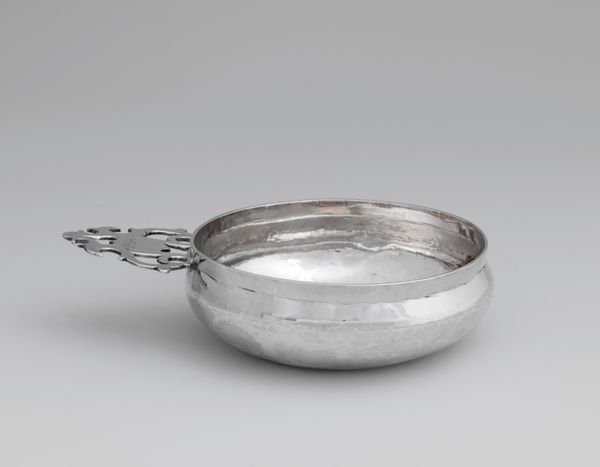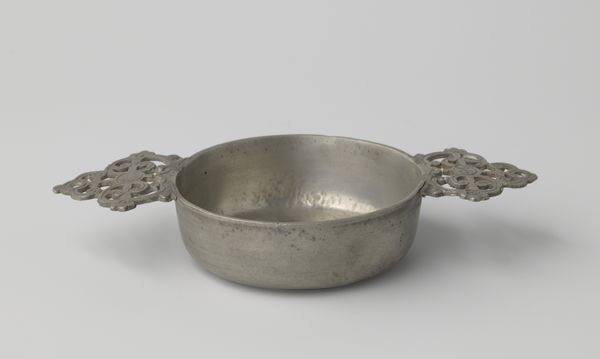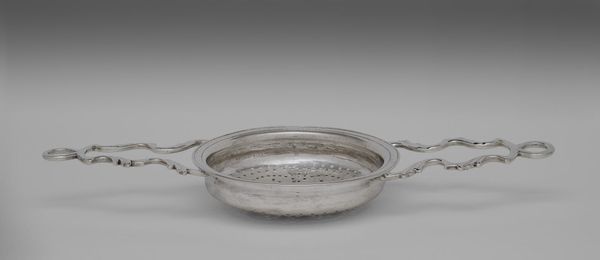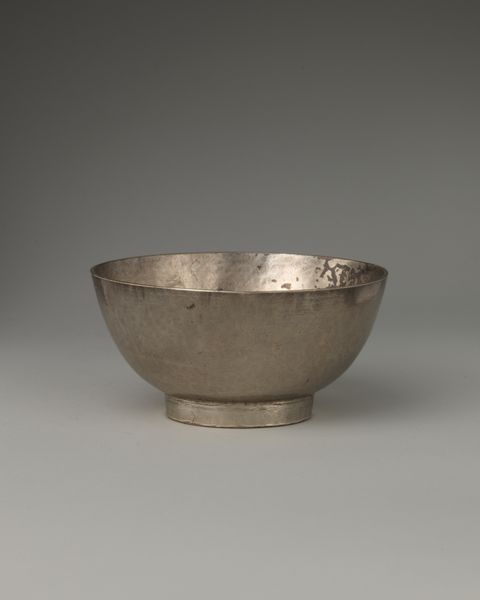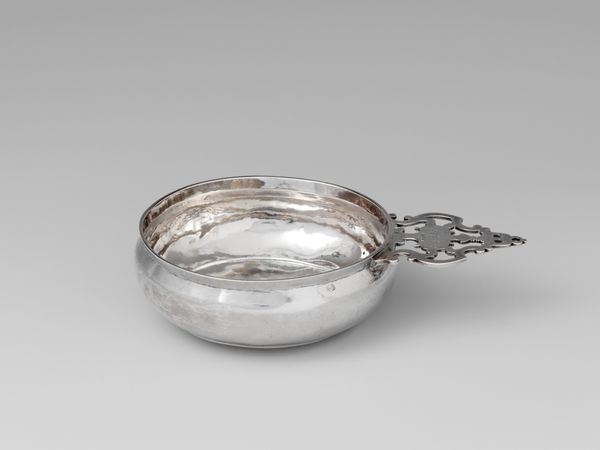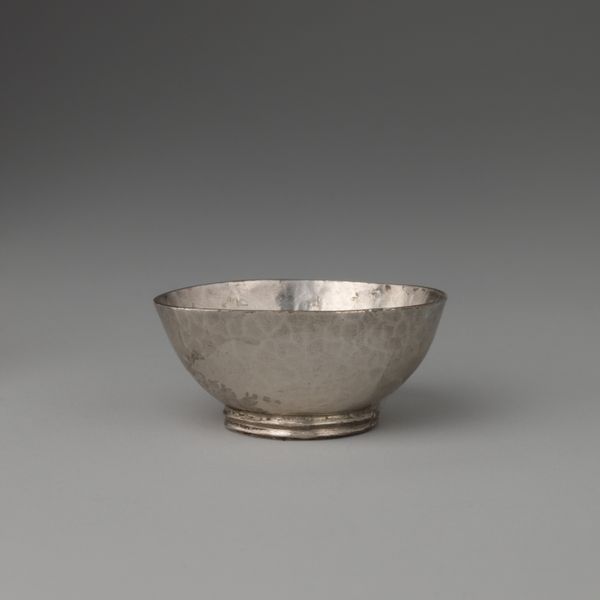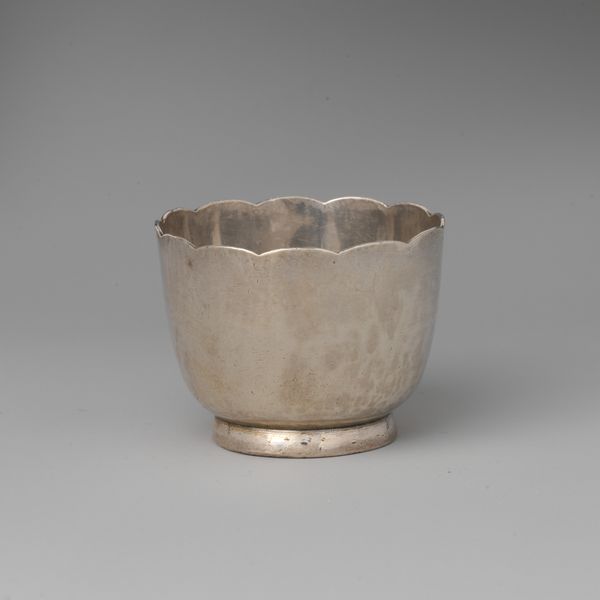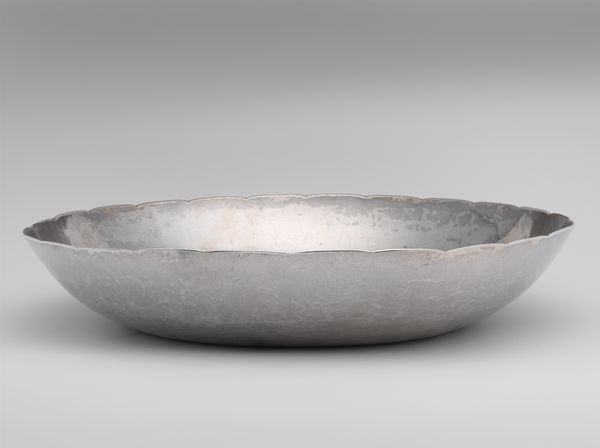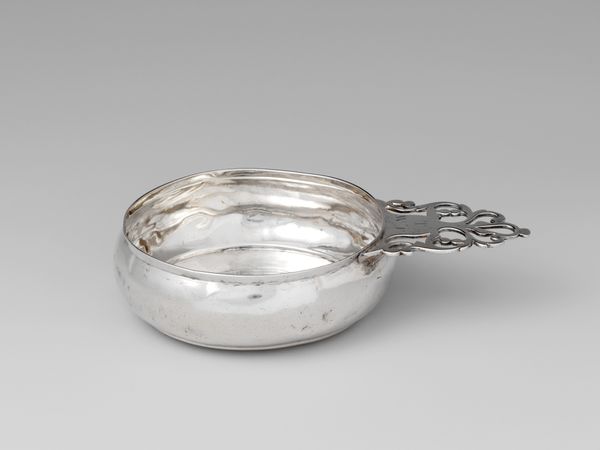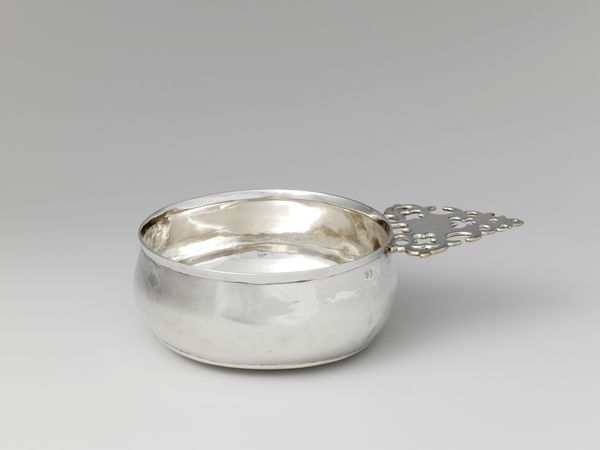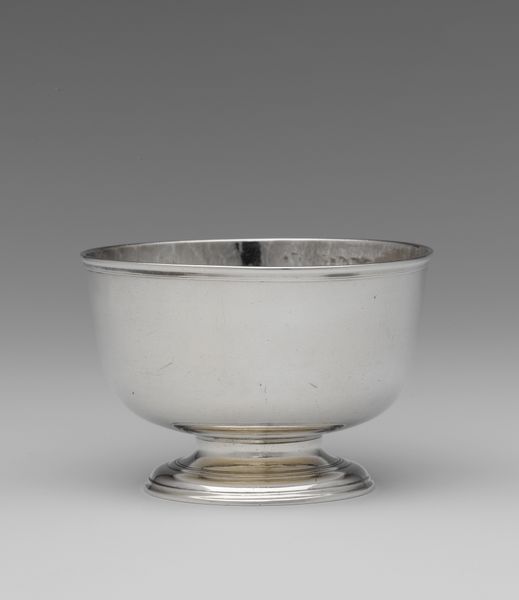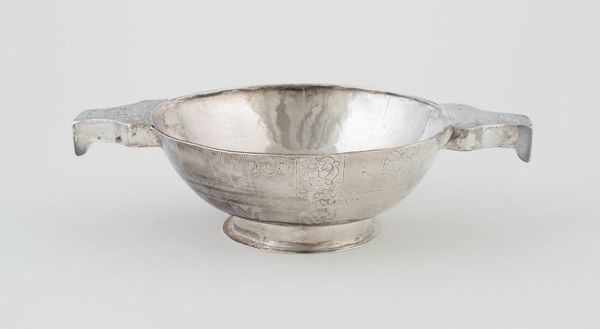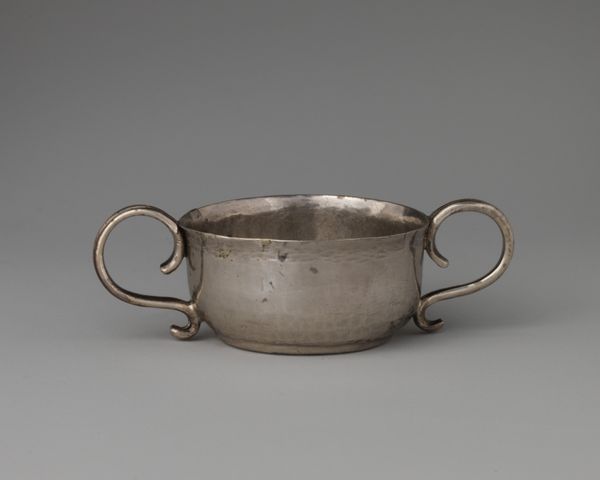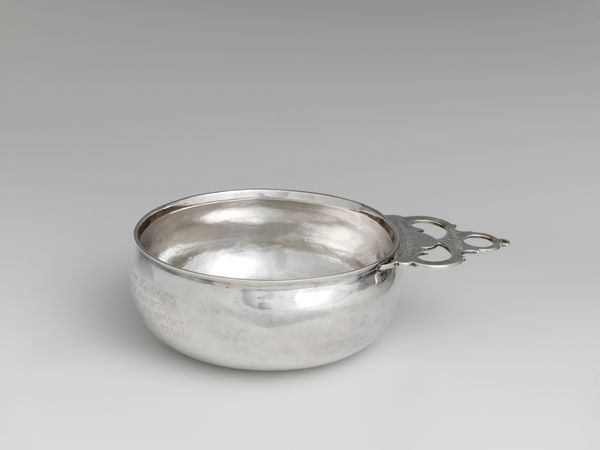
silver, metal, sculpture
#
silver
#
baroque
#
metal
#
sculpture
#
decorative-art
Dimensions: 7/8 × 2 5/8 × 2 in. (2.2 × 6.7 × 5.1 cm)
Copyright: Public Domain
This miniature porringer was made by David Clayton, an American silversmith, likely in the late 17th or early 18th century. It’s formed from a single sheet of silver, hammered into its curved shape. Look closely, and you can see the marks left by the hammer. This texture isn't a flaw; it’s a testament to the silversmith's skill, and the labor-intensive process of hand-raising. The handle, cast separately, is attached with care. Silver, a precious material, signifies wealth and status, but the small size of this porringer suggests it was made as a toy or a display of the silversmith's virtuosity. Consider the social context: Clayton would have been part of a network of artisans, producing luxury goods for a growing merchant class. Each piece, whether functional or decorative, reflects the values and aspirations of its time. By appreciating the making, we gain a deeper understanding of the object, and its place in history.
Comments
No comments
Be the first to comment and join the conversation on the ultimate creative platform.
